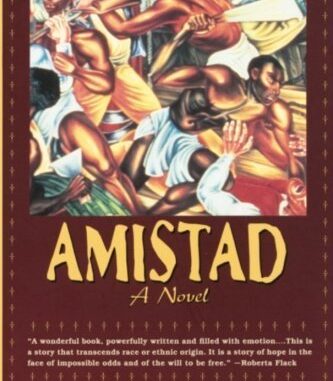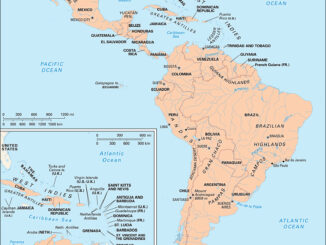
This great book by David Pesci remains an essential read for the understanding of the trans-Atlantic slave trade.
The story begins with Singbe, a Mende slave, waking up to the frozen touch of a child’s corpse. From the very first words in the book, the reader’s nightmare begins as Singbe’s ordeal and the story of slavery is narrated with such chilling clarity and skill.
The Amistad (which means friendship), a Spanish slave-ship, makes its way across the Atlantic destined for the coast of Cuba with its human cargo. The snatching of slaves from Africa, though outlawed by the British and the Americans in 1809, continued for many years since the Spanish and Portuguese governments were not bound by these laws.
Ferrying Singbe and his group must have been a routine voyage for Captain Ramon Ferrer and his men. After all he and his crew had been running slaves for more than twenty years. But against wretched odds, Singbe and his men took over the control of the Amistad. The cook and captain were killed in the skirmish. But the slaves had no intention slaughtering the entire crew in retribution. All they wanted was to go home.
Since they knew nothing about seamanship they had to rely on one of the sailors, Montez, to steer the ship back to Africa. But through guile, Montez manoeuvres the wheels the other way and the ship ended up along the coast of America, setting off a political tempest of Shakespearean proportions.
The book therefore is mainly about the tribulations of the captured slaves as the American justice system decided on their fate. Interestingly it is only the Africans who had to face the courts to establish their innocence, and not their Spanish captors. They have to secure their own counsel while the US Secretary of State instructs the Federal District Attorney of New York to extend the Spaniards, Ruiz and Montez, ‘every courtesy and measure of legal assistance’.
Thus even though, to America’s credit, the battle was to be fought in the courts, the Africans were ‘going against entrenched sentiment regarding the black race and a system which has legally condoned slavery for more than two hundred years.’
The legal arguments on both sides were fierce, intricate and beguiling. Were the Africans property of the Spanish merchants Ruiz and Montez? If this was the case they would have to be returned to the control of the Spanish authorities and for trial under the Spanish courts. Or were they free men stolen from the coast of Africa? If this was the case then the American government, according to its own laws, would have to ensure their safe return back to Africa.
Did they commit murder when they wrested control of the ship, or were their actions to be considered self-defence and a justifiable attempt to free themselves from illegal bondage? Judge Judson found in the favour of the Africans to the detriment of his aspirations to be a Supreme Court justice. The case was appealed by the American government and taken to the Supreme Court where the findings of Judge Judson were upheld.
The author introduces us to some of the historic figures of the time. The president of the United States Van Buuren takes a personal interest in the case. The court documents show how he tried to use his office to manipulate the case, and co-operated with the Spanish authorities while showing scant regard for due process.
He seemed to be a man who valued the results of the next election above principle. He didn’t realise the significance of the plight of the Africans to his presidency. Like the mariner in the Coleridge’s The Rhyme of the Ancient Mariner, he could see but he didn’t understand what he saw. The Amistad Africans were the albatross to his leadership that he gratuitously shot.
There are the Tappan brothers, Lewis and Arthur, who risked life and limb fighting not only for the cause of the Africans but were also vociferous abolitionists. Judge Judson had an outstanding legal mind with aspirations for higher office. He nevertheless upholds the law and frees Singbe and his men despite warnings that such a decision could imperil his career.
Then there was also John Quincy Adams, a former United States President, described by the author ‘as a man of high intelligence’ with a ‘reputation as a gripping orator’. John Adams lends his formidable intellect and eloquence to the Amistad Africans’ cause, and secures freedom and passage for all of them back to Africa. Far from being a trial of Singbe and his men, it was the American nation that was on the dock.
Singbe was not the only hero to emerge from this voyage of darkness. His legal team had to overcome impossible odds. They were assisted by the American constitution which was an almost impassable moat against injustice.
There is no delicacy in the manner in which the author tells his story, and the coarseness of slavery is skilfully depicted in the book with words like manacle, chains, musket, thump, lifeless, hunt, blood, knife, lash, cargo, contraband, tribesmen, light-skinned, black-skinned, and of course death.. He wrote it so that the readers need no explanation from the author.
Amistad is a wonderfully told and well researched book. The movie by Steven Spielberg with Anthony Hopkins, Morgan Freeman, and Djimon Hounsou does justice to this story of a slave who shamed some of the most powerful players in the slave trade.
This grotesque and heroic saga of slavery is likely to linger in the reader’s mind though, long after reading the book.
Unless otherwise stated, PONIREVO and/or its licensors DO NOT own any intellectual property rights in the website and material on the website. Majority of the site’s content has been scraped and auto posted by a third party artificial intelligence program —– PONIREVO Creation Team.
Proudly WWW.PONIREVO.COM



